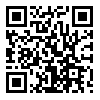دوره 10، شماره 1 - ( 1399 )
جلد 10 شماره 1 صفحات 77-71 |
برگشت به فهرست نسخه ها
چکیده: (3142 مشاهده)
BACKGROUND
Mandibular fracture is considered the second most common facial fracture worldwide. We aimed to evaluate the epidemiology of mandibular fractures in traumatic patients hospitalized at Velayat Teaching Hospital in Rasht, Iran for 6-year.
METHODS
In this retrospective study, all traumatic patients with mandibular fractures ad-mitted to Velayat Teaching Hospital, Rasht, northern Iran for 6-year (2013-18) were enrolled. The data collection tool was a checklist consisting of two parts: demographic information, and injury data. All data were collected through the Hospital Information System (HIS), and analyzed using SPSS software and descriptive and analytical statistics tests.
RESULTS
Overall, 463 hospitalized patients were reviewed. Males had higher frequency than females. The most common accident place was rural roads. The most fre-quent mechanism of fractures was road accidents. The most common injuries occurred in motorcyclists, followed by car passengers, pedestrians, and cyclists. The highest and lowest frequency of injury occurred in September, and Febru-ary, respectively. The most common site of fracture was condyle, followed by trunk. In concurrent fractures, the most frequently affected site was maxillary bone, followed by zygomatic bones, orbital, nasal, and frontal bones.
CONCLUSION
The majority of patients with mandibular fractures were young men of working age following motor vehicle accidents. Consequently, the most effective strate-gy for reducing accidents leading to mandibular fractures is considering all three components of human, environment, and vehicle.
Mandibular fracture is considered the second most common facial fracture worldwide. We aimed to evaluate the epidemiology of mandibular fractures in traumatic patients hospitalized at Velayat Teaching Hospital in Rasht, Iran for 6-year.
METHODS
In this retrospective study, all traumatic patients with mandibular fractures ad-mitted to Velayat Teaching Hospital, Rasht, northern Iran for 6-year (2013-18) were enrolled. The data collection tool was a checklist consisting of two parts: demographic information, and injury data. All data were collected through the Hospital Information System (HIS), and analyzed using SPSS software and descriptive and analytical statistics tests.
RESULTS
Overall, 463 hospitalized patients were reviewed. Males had higher frequency than females. The most common accident place was rural roads. The most fre-quent mechanism of fractures was road accidents. The most common injuries occurred in motorcyclists, followed by car passengers, pedestrians, and cyclists. The highest and lowest frequency of injury occurred in September, and Febru-ary, respectively. The most common site of fracture was condyle, followed by trunk. In concurrent fractures, the most frequently affected site was maxillary bone, followed by zygomatic bones, orbital, nasal, and frontal bones.
CONCLUSION
The majority of patients with mandibular fractures were young men of working age following motor vehicle accidents. Consequently, the most effective strate-gy for reducing accidents leading to mandibular fractures is considering all three components of human, environment, and vehicle.
| بازنشر اطلاعات | |
 |
این مقاله تحت شرایط Creative Commons Attribution-NonCommercial 4.0 International License قابل بازنشر است. |

